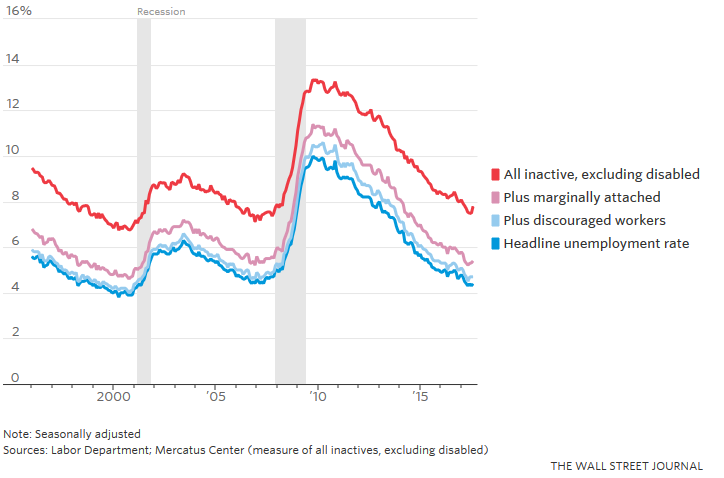Low participation rate doesn't tell the whole story
The WSJ has an interesting story today about the puzzle of 25-54-year old male workers in the United States. In 1930, only 2% of them weren't looking for work, that doubled by 1970 and last year it hit 11.5%.
That's one of the most-shocking, disappointing, saddening statistics around.
The question is whether they're really not looking for work, or if they would take a job if it was a bit easier to find, or if it paid a bit more. That's a critical question for the Fed because of that segment (more than 1 out of 10 prime-aged men) came out of the woodwork and into the labor force, it would depress wages and inflation.
The story today focused on research from economists at George Mason University who say those workers aren't coming back. Nearly 60% of them report being disabled. Much of the rest is explained by male students, homemakers, caregivers and retirees.

For the Fed, it means there really isn't the slack so wages should go up soon. If they don't, it means that alternatives like offshoring, automation and stickiness are the real culprits.



